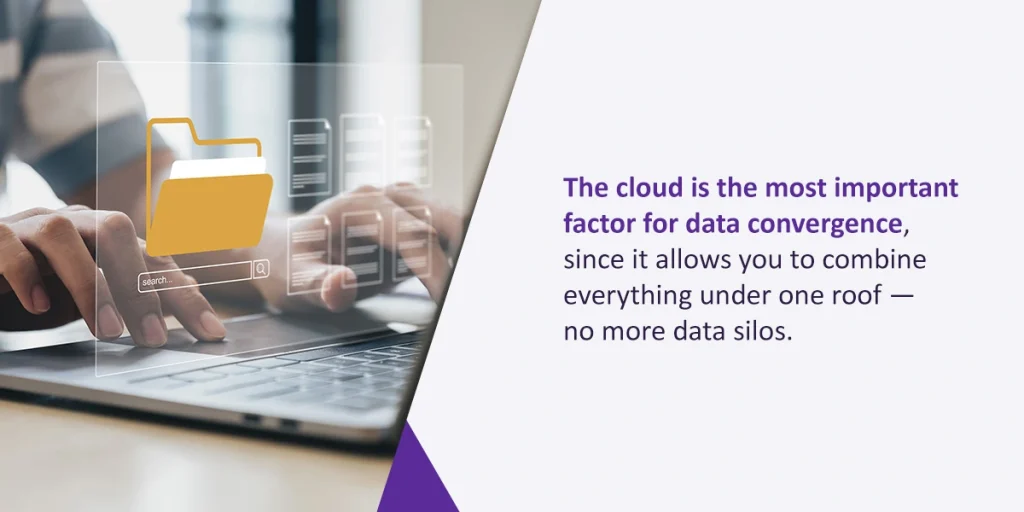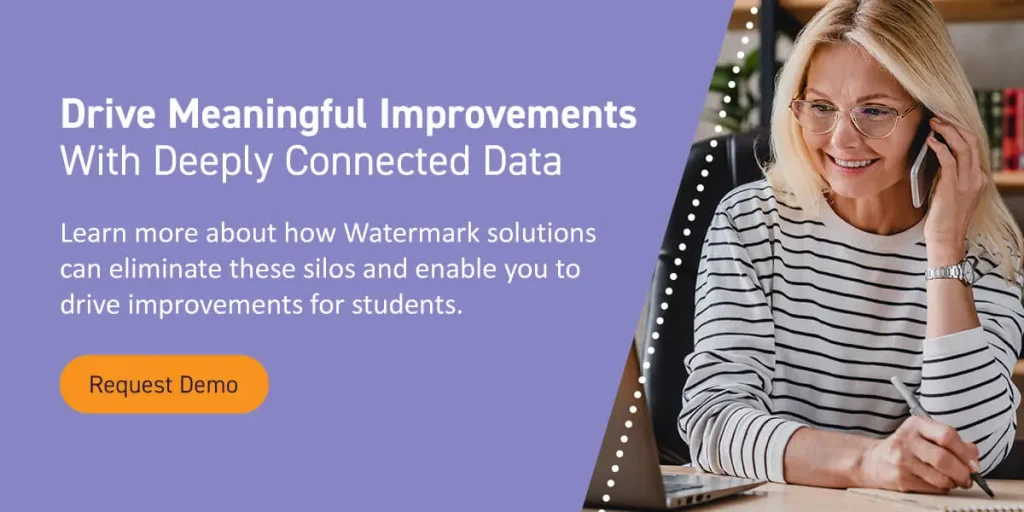



Higher education institutions increasingly turn to assessment and curriculum management to find the data needed to support student achievement. Software purpose-built for higher education and other technological advances allow colleges to demonstrate institutional effectiveness.
Data convergence refers to the process of consolidating all your institution’s data into one unified cloud system. It’s a simple concept that enables institutions to modernize without sacrificing control of their systems.
The many benefits of digital convergence include:
As higher education institutions adopt more software tools, avoiding data silos becomes increasingly challenging.
Data silos appear when groups — departments, programs, or teams — use disparate systems to store their information. This situation makes siloed data inaccessible to people outside the group, which can:

Implementing centralized, cloud-based software solutions eliminate data silos and the problems that come with them. The cloud is the most important factor for data convergence since it allows you to combine everything under one roof — no more data silos.
Higher education institutions can leverage data-driven processes to:
Better-connected solutions mean improved user experience and efficiency for campuses. Leading-edge platforms empower institutions to gain insight into their most pressing questions. How does a department’s performance measure up to the university’s mission? Are students demonstrating learning outcomes per their career goals and aspirations? Leveraging big data can help you find answers to these questions and more.
The impact of technology on decision-making in higher education has been shown to be advantageous. Data convergence solutions allow college administrators to:
Many administrators claim that they would be able to make real change if they only had comprehensive data to work with. The thing is, most higher education institutions already collect massive quantities of data — they just don’t know how to use it effectively.
This disconnect makes sense given how much the rate of change has accelerated over the past decade. In the past, tracking long-term trends through legacy data architectures was enough to make lasting improvements. Today, though, the litany of unprecedented challenges higher education institutions face requires greater institutional agility. Administrators need to consider how they can use all the data they already have at their disposal to get the best insights into the campus experience.
Leveraging more granular data, such as space utilization, Wi-Fi connections, and learning management system (LMS) usage, can help institutions respond more effectively to evolving student and faculty behaviors — which is critical for improving the overall campus experience. The key is to invest in technology that allows you to extract the most meaning from the data you collect.
A user-friendly software solution with advanced analytics capabilities and intuitive data visualizations can provide valuable real-time insights into changing student behaviors so you have the most accurate idea of where your institution can improve. For a seamless implementation, consider how any new technology you adopt will supplement your existing data systems.
Watermark understands the growing importance of leveraging data to make informed decisions that positively impact learning outcomes for students. In higher education, each data system has historically been a silo that offers its greatest insights when connected to other data systems.
Learn more about how Watermark solutions can eliminate these silos and enable you to drive improvements for students. Request a customized demo today.

























































































































































































































































































































































































Submit this form to schedule a meeting with one of our reps to learn more about our solutions. If you need customer support instead, click here.